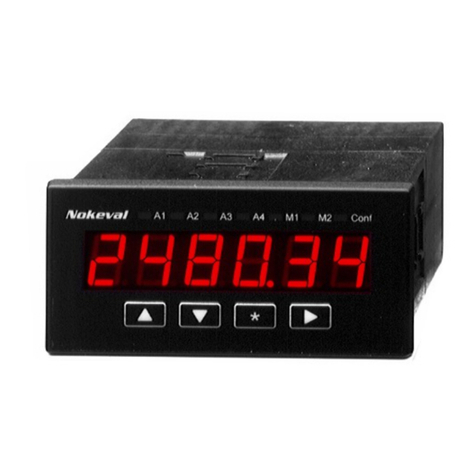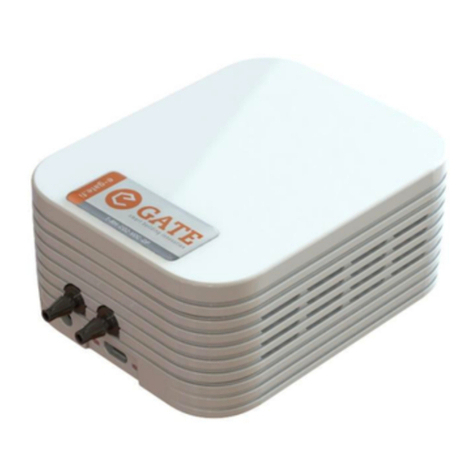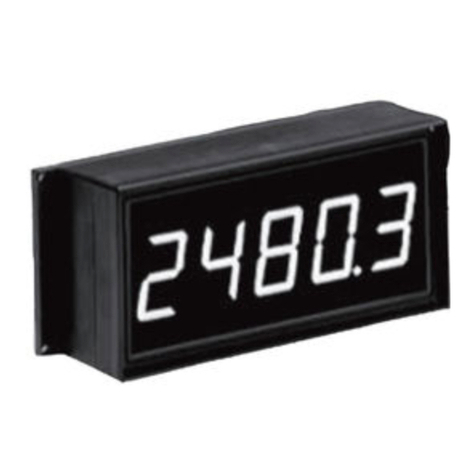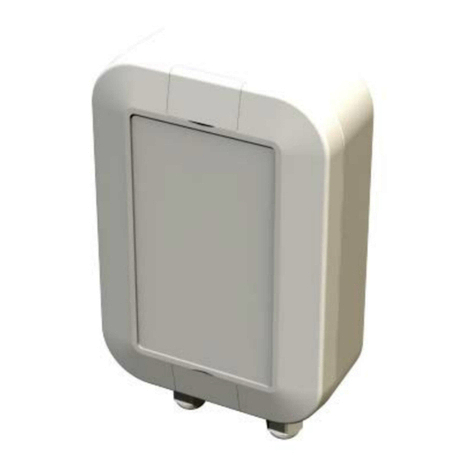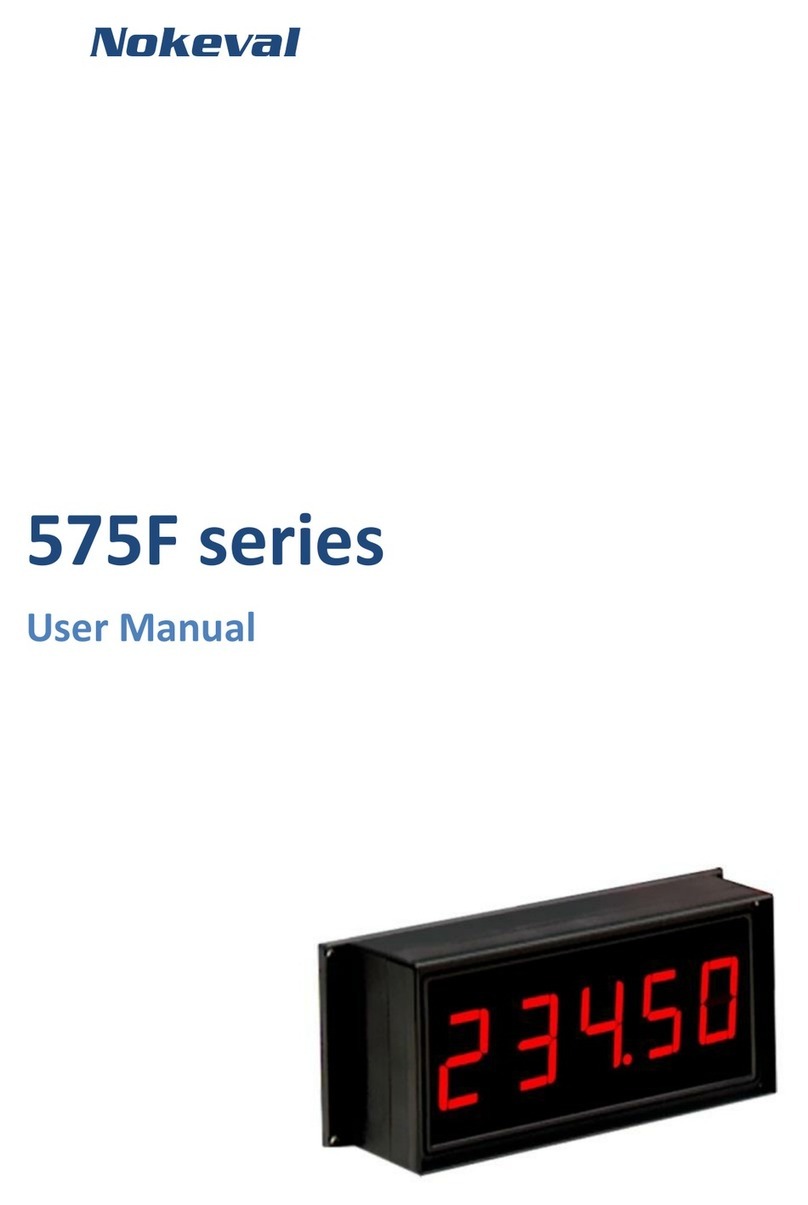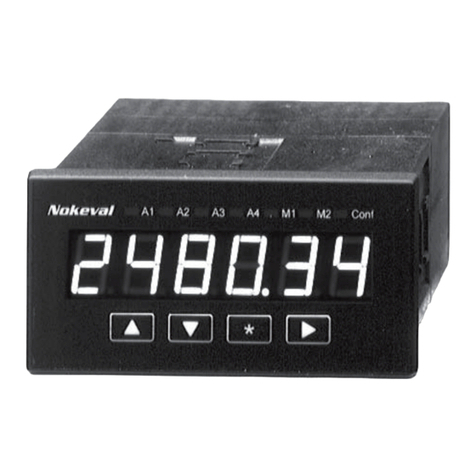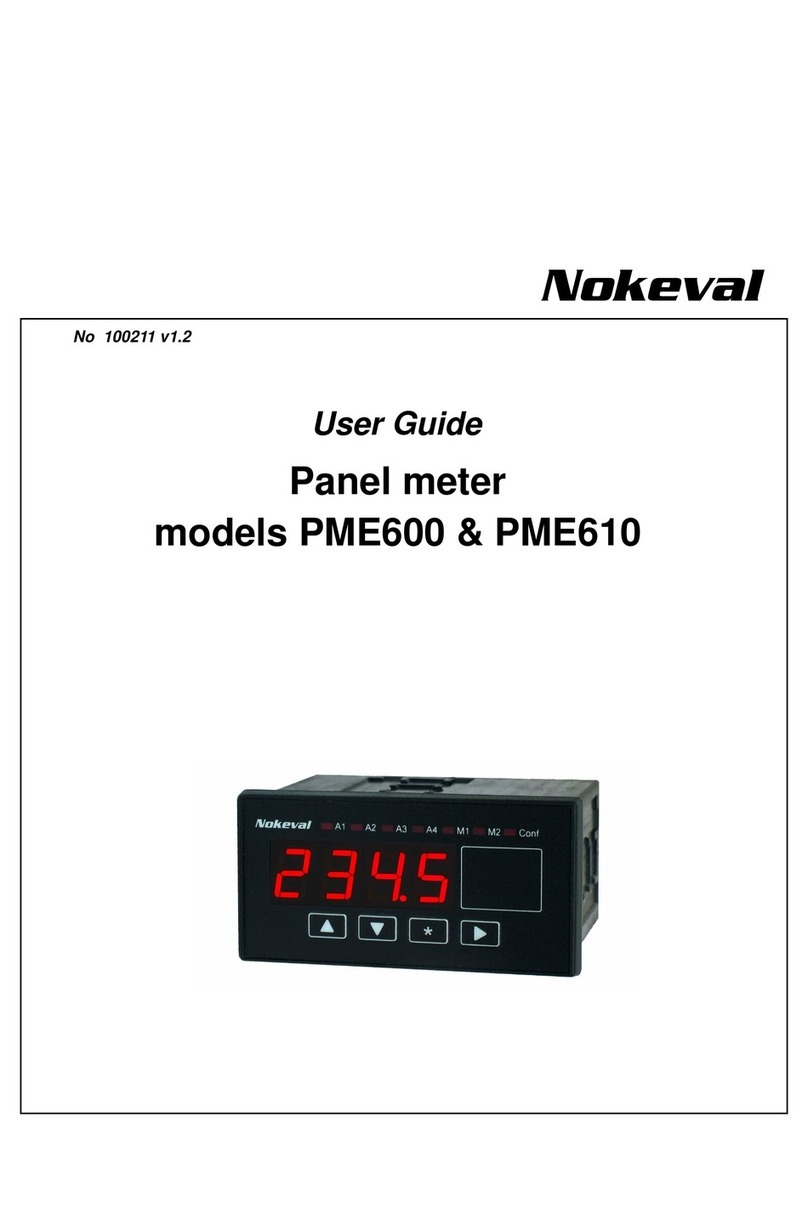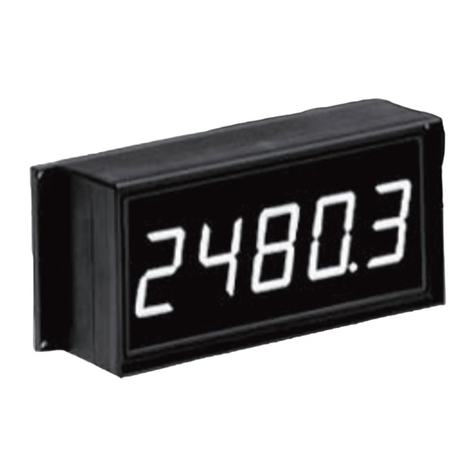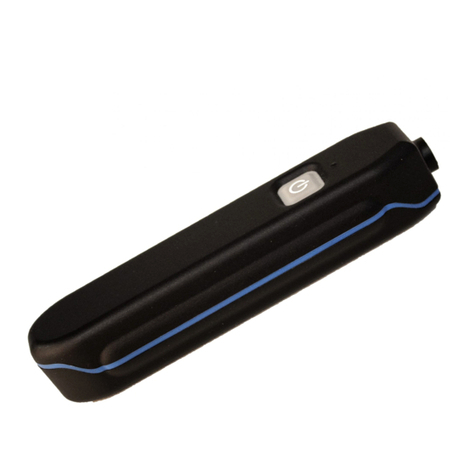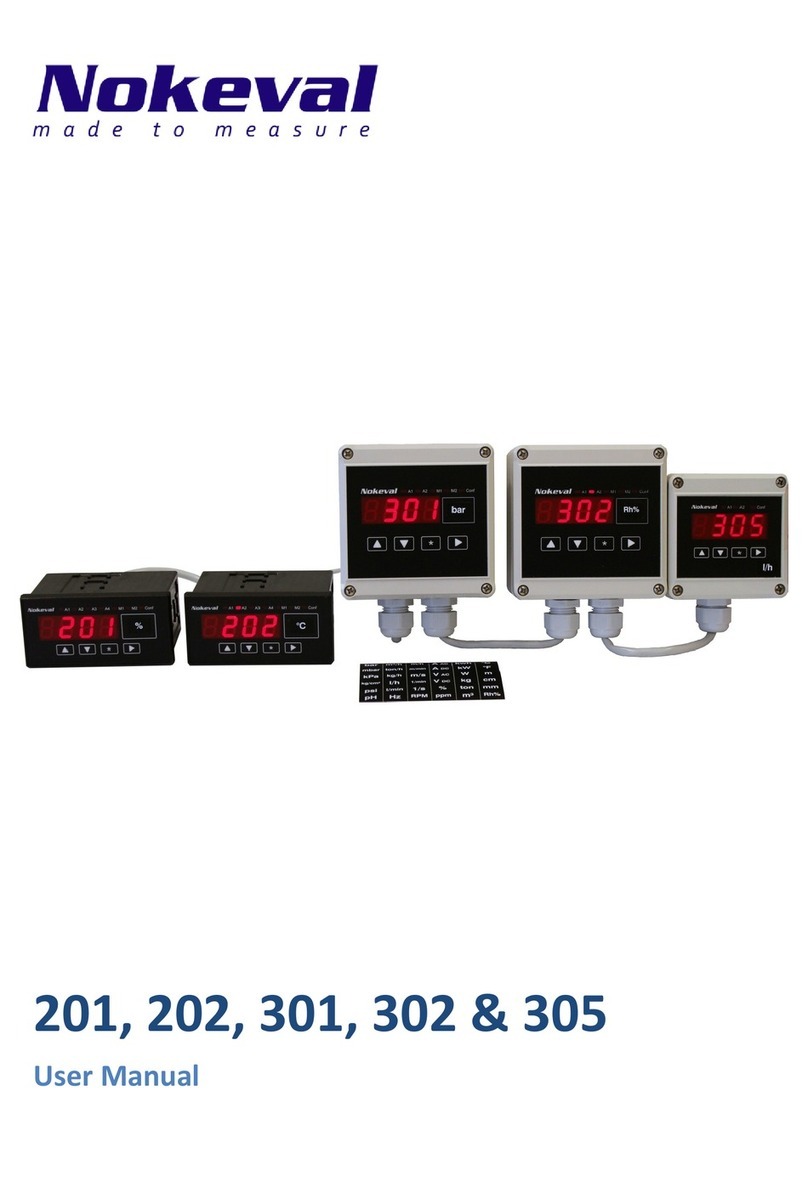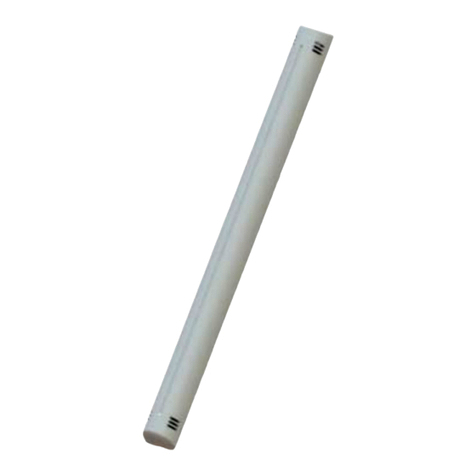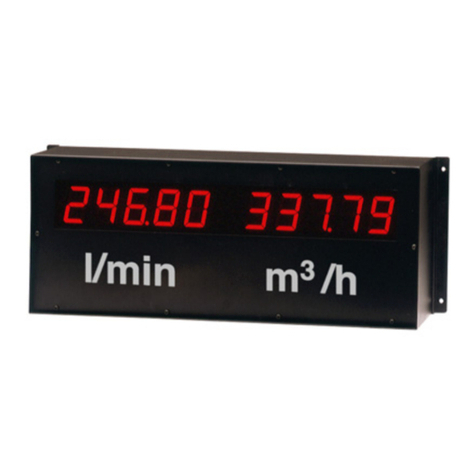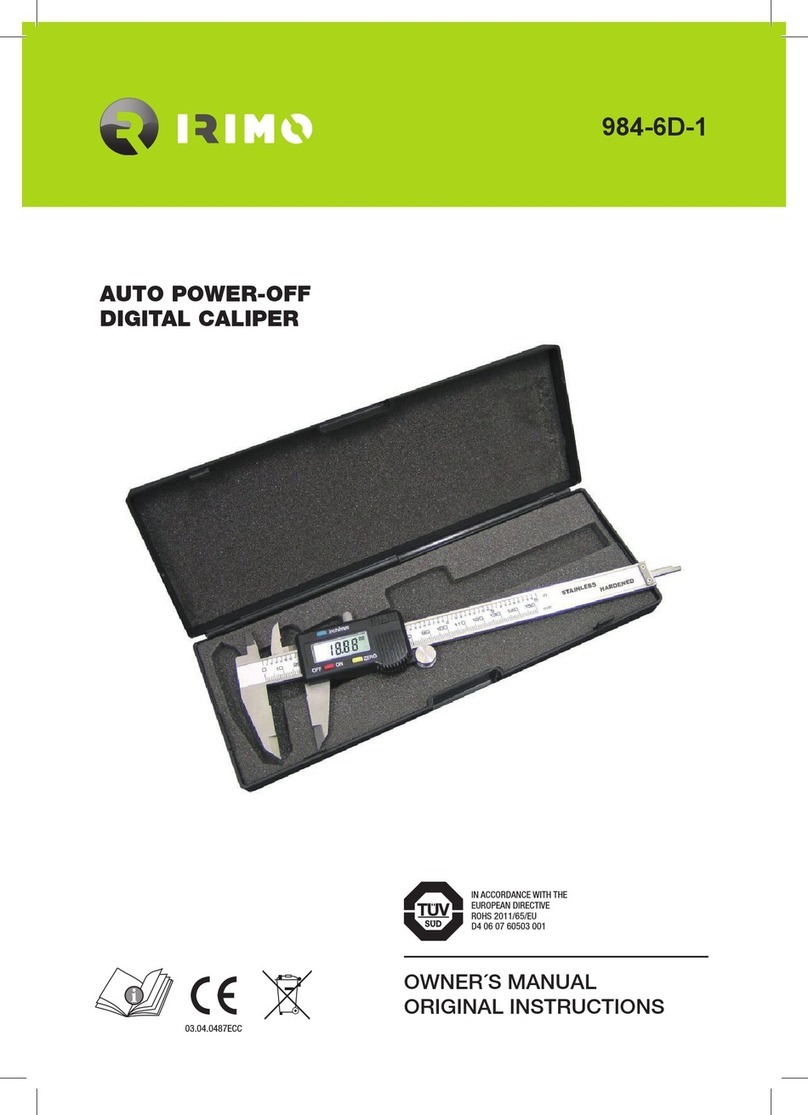7
However, most spaces with metal walls have doors or openings of some sort, and these openings and the
seals between them and the door, leak radio signals if the seals are made of non-conductive material. As a
rule of thumb the device should be mounted with antenna positioned vertically just like the antenna of the
radio receiver. The doors that leak the radio signals usually have larger vertical dimensions than horizontal
and thus leak the vertically polarized signal from the vertically mounted antenna more effectively.
The antenna should never be installed flat against a conductive (metallic) surface. Direct contact of the
antenna with a metal surface heavily attenuates the transmission and dramatically reduces the range. If
possible, there should be an air gap of at least one or two centimeters all around the antenna. Practical
experience has however shown that radio reception has been flawless from a transmitter completely
covered in frozen vegetables for example.
One more factor that affects the final transmission range and performance is the local radio interference
and noise condition. This should be seriously considered in heavy industrial installation sites or any sites
with lots of power electronics around, for example power inverters and large electric motors. At least the
radio receiver should be located as far as possible from this type of radio interference sources.
In any case, it is worth considering the installation location from the radio technical perspective too. For the
FT10-IS and FT10-RHT the primary guide in selecting the installation location should always be the
measurement perspective. The models with external sensor (FT10-ES and FT10-CS) give more flexibility in
choosing the installation location of the transmitter itself. But even for these, the guidelines given in the
next chapter should be followed when choosing the installation location for the external sensor.
Measurement perspective
FT10-IS and FT10-RHT must always be installed into the location whose temperature and/or humidity is to
be measured, because the devices measure their own internal temperature. The device itself does not
generate heat and therefore its internal temperature stabilizes to the ambient temperature. The mass of
the device causes a certain amount of delay and filtering from ambient temperature changes. This is a
designed feature that attenuates rapid temperature fluctuations that could cause false alarms in the
temperature surveillance system. Causes of these rapid temperature fluctuations include opening doors,
defrosting cycles, compressor operating cycles and persons moving nearby. The temperature response time
of FT10-IS and FT10-RHT is about 15 minutes, which is still short enough for the intended purpose when a
real alarm condition occurs. If this response time is too long for the application, consider using FT10-ES or
FT10-CS models instead where the response time is dictated by the selected external temperature sensor.
When choosing the installation location one must consider multiple effects affecting the temperature
distribution in the space. Air tends to layer such that cooler air is lower and warmer air is higher.
Evaporators and fans blow cold air into their vicinity. Doors, vents, lamps and other heat sources warm up
their surroundings. The device or external sensor should be installed into a spot whose temperature follows
as closely as possible to the temperature of the target products in the same space. Therefore the device or
the sensor should not be installed:
•close to the floor or ceiling,
•onto the floor or ceiling,
•near the evaporator of a refrigeration unit,
•near the place where the cold/hot air flows from the evaporator/radiator,
•near a door or other opening and definitely not above one,
•close to a lamp or other heat source nor
•in a location where it is likely that the device will be covered up or get mechanically damaged.

